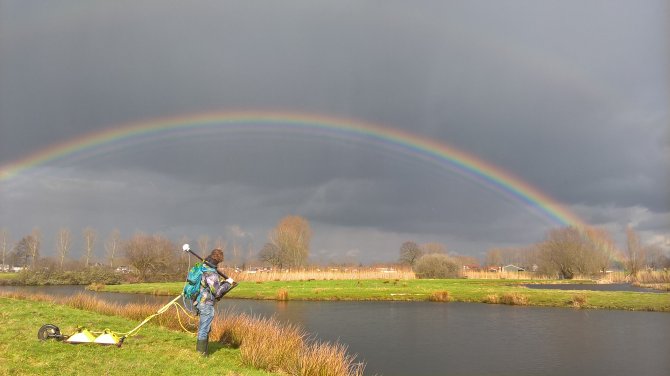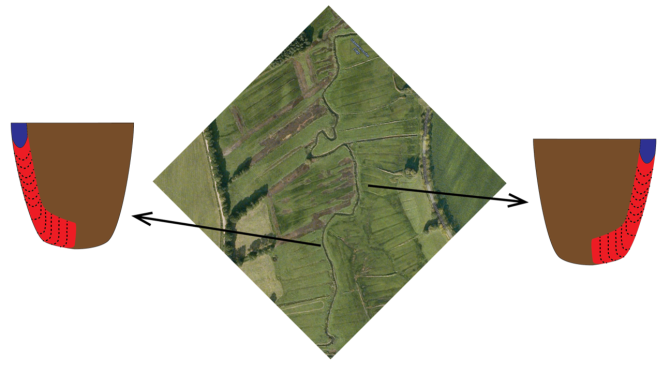
Project
Morphodynamic evolution of low-energy rivers during the Holocene
PhD project Jasper Candel as part of the NWO-funded RiverCare project
Low-energy rivers are often classified as non-dynamic, with a stream power too low to induce lateral migration. However, low-energy rivers often have a high sinuosity and sharp bends. Unknown is how and why the sinuous planform evolved and whether the sinuosity is a result of lateral migration of channels. Improved understanding of the evolution of low-energy rivers provides inspiration for their restoration, in which low-energy rivers are often re-meandered, regardless of their potential for lateral migration.
Figure 1 Studying low-energy river bend formation using a ground-penetrating radar.
The aim of this project is to identify the mechanisms that lead to the formation of highly sinuous planforms in low-energy rivers during the Holocene. We will focus on
- 1) low-energy rivers in peat-filled valley systems (Candel et al., 2017)
2) low-energy meandering rivers in self-formed heterogeneous floodplains
3) a channel pattern change from laterally stable to meandering
4) improving the stability diagram (Kleinhans & Van den Berg, 2011) in order to predict the lateral activity of rivers
5) the relation between hydraulic processes, channel planform and floodplain formation in low-energy rivers.
Figure 2 Conceptual model of oblique aggradation in a peat-filled valley, explaining the sinuous planform formation during the Holocene (Candel et al., 2017).
This knowledge contributes to the development of sustainable and cost-effective low-energy river restoration approaches. These should be aiming at restoring the natural morphodynamic processes, as alignment with these processes is expected to increase robustness and reduce maintenance efforts.
Publications:
Candel, J. H. J., Makaske, B., Storms, J. E. A., and Wallinga, J. (2017) Oblique aggradation: a novel explanation for sinuosity of low-energy streams in peat-filled valley systems. Earth Surf. Process. Landforms, 42: 2679–2696. doi: 10.1002/esp.4100.

More Information
please contact me if you need any information about my project (see contact details above).
Start project: December 1, 2014
End project: November 1, 2019
Partners: STOWA, Alterra, Witteveen+Bos
RiverCare

